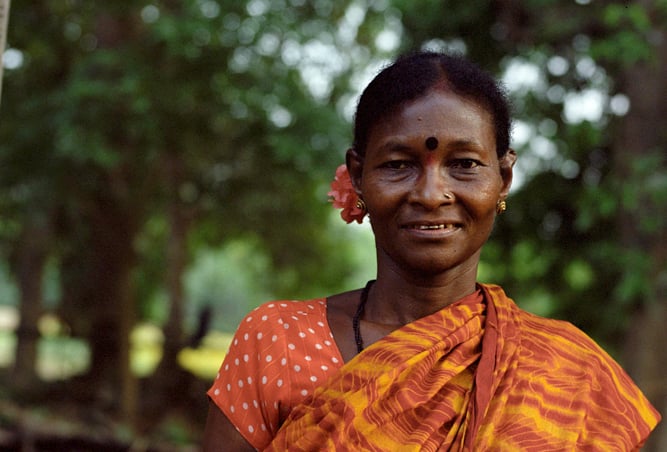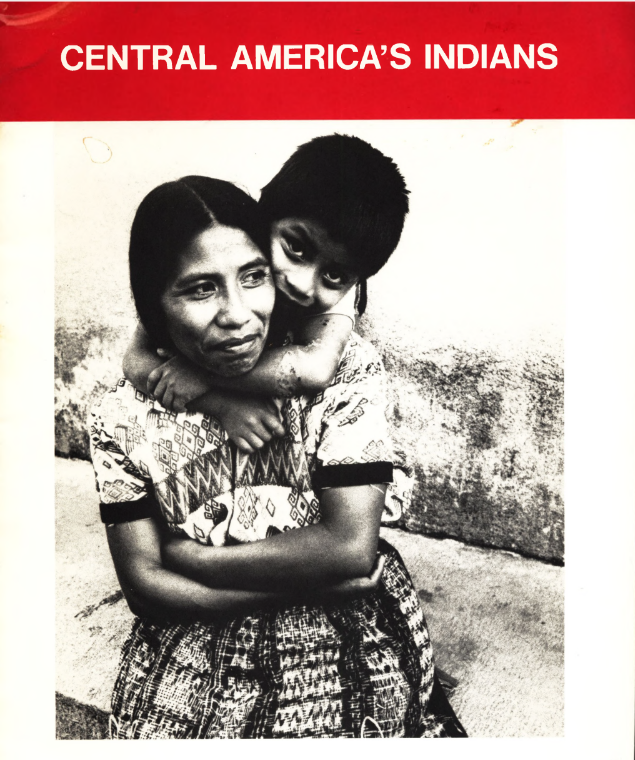Garifuna in Honduras
-
Garífuna are one of two Afro-Honduran communities regarded as distinct ethnic groups within the country, having preserved an ethnic and cultural identity apart from the mestizo mainstream. As with other indigenous communities, Garifuna are closely associated with traditional ancestral lands but are not recognized by the Honduran government as a people. Many Garifuna activists avoid calling themselves Afro-descendant, since they feel that it detracts from their unique culture and identity. The language, dance and music of Garifuna in Belize, Honduras, Guatemala and Nicaragua was initially proclaimed in 2001 and then inscribed in 2008 by UNESCO as a part of the Intangible Cultural Heritage of Humanity.
Garífuna are the third largest minority or indigenous community in Honduras, numbering 43,111 people. They are the descendants of African-Carib populations from the Caribbean island of St Vincent who were exiled to the Honduran coast in the eighteenth century.
While there are significant Garífuna populations in the cities, most are located in coastal communities extending from Nicaragua to Belize. Garífuna are distributed in some 43 villages in Honduras mainly in the departments of Cortés and Gracias a Dios. With at least 100,000 Garífuna living in the United States, millions of dollars from this group are pumped into the Honduran economy annually through transfer payments to relatives.
Rural Garífuna communities live mainly on subsistence agriculture, fishing and foreign remittances. Unemployment is high, and many men emigrate in search of income, reinforcing the traditional matriarchal structure of the Garífuna family.
-
Early Spanish colonial Honduras initially held great promise as an abundant source of precious metals. The first Africans arrived in 1540 to replace the rapidly declining enslaved indigenous labour pool especially in the silver mines, which proved more promising than gold retrieval. By the 1600s, many enslaved Africans had escaped and mixed in with indigenous people, poor Spanish migrants and freed blacks to form the range of mixtures that constitute the mainstream Honduran rural mestizo peasant culture.
The second important stream of Africans was brought by British colonists. They came to the Bay of Honduras in the 1600 and 1700s for plantation work and natural resource extraction. Many of these mixed with Miskito.
Garífuna waged a 40-year war of resistance against invading colonial powers until improved cannon technology forced them to accept permanent exile as prisoners of war. In April 1797, over 5,000 Garífuna were transported on British ships and left on the then deserted Honduran Bay Island of Roatan. Many later moved to the mainland and became allied with Spain.
Garífuna fought with the Spanish against British pirates and military attacks. They also took the Royalist side against the independence-seeking local ‘criollos‘ and became a highly marginalized population in post-independence Honduras. This support for those who were defeated prompted a further dispersion to Nicaragua, Guatemala and Belize.
On the relatively isolated coast of Honduras and other countries, Garífuna were able to maintain their language and other cultural practices. In their communities, women did agricultural work and men engaged in fishing and artisan activities.
In the 1900s Garífuna men in Honduras began seeking income opportunities in Mosquitia logging camps and American-owned banana enclaves. This included becoming merchant mariners on fruit company boats and migrating to the US. As a result, Garífuna society has remained strongly matrilocal and oriented regionally rather than solely in a Honduran national framing.
In 2001, UNESCO declared Garífuna culture a Masterpiece of Oral and Intangible Heritage of Humanity. Among other factors, this was due to their ‘outstanding value, roots in cultural tradition, affirmation of cultural identity, contemporary cultural and social role, excellence in the application of skills, and risk of disappearing.’ The status was confirmed through inscription on the UNESCO list in 2008.
Garífuna and Creoles, as Afro-Hondurans, have a history of organizing together against racial discrimination. In the 1970s they founded the Fraternal Black Honduran Organization (La Organización Fraternal Negro Hondureño, OFRANEH) which continues to play a critical role in Honduran civil society.
Garífuna social struggles, which gathered momentum in the 1980s, have increasingly centred on holding onto scarce land resources and fishing rights, which has strengthened their links with other indigenous groups.
-
Positive developments have occurred in Honduras where the authorities have increasingly created national programmes for Garifuna and other indigenous peoples.
As an indigenous and tribal people, Garífuna are entitled to rights and freedoms through the national Constitution as well as through ILO Convention No. 169, of which Honduras is a signatory. According to Article 346 of the Constitution, the Honduran government must ’adopt measures to protect the rights and interests of indigenous communities in the country, especially the lands and forests where they have settle’. However, Garifuna activists say that the current government disputes their status as a people, based on the belief that they came to the country from elsewhere, to which Garifuna themselves point out that they were present in Honduras long before the country became independent. Moreover, Article 107 of the Constitution prevents the sale of coastal lands to foreigners, but overseas tourism interests have been quick to find loopholes.
The Garífuna community is particularly exposed to discrimination and human rights violations. Against a backdrop of entrenched discrimination, violence against Garífuna members also persists. For example, after two Garífuna members were killed with extreme brutality Amnesty International sent a public letter in November 2013 to all presidential candidates highlighting the various structural challenges that Garífuna members face. These include inadequate access to public services and decision-making processes, the absence of justice regarding crimes and abuses against the Garífuna, and the weak enforcement of the right to free, prior and informed consent. It called for greater protections for both Garífuna and indigenous communities from rights violations by state officials and non-state actors.
Tourism-related issues pose the greatest danger on the mainland and at least four Garífuna communities on the north coast of Honduras are under unprecedented threat of disappearance. For over two centuries the remote isolation of the Honduran coast and the social marginalization of Garífuna beachfront communities served as a measure of protection. However, a new dynamic began to emerge following public statements in 2001 from the Honduran Tourism Secretary which claimed that hundreds of kilometres of pristine sun-drenched North Coast beaches were being wasted and should be ‘developed for strong tourism.’ In the years that followed many Garífuna have been evicted from their land in the Tela Bay region in northern Honduras, such as in Tornabé by government designation of a National Park and an environmental protected area. This property was later transferred to the Honduran Tourism Institute (IHT) which engaged in joint ventures with private sector interests.
Tela Bay has been developed into a major tourist destination by the Tela Bay Touristic Development Society (DTBT). The first of the Tela Bay hotel resorts opened in 2013 and in September 2014, armed police evicted approximately 400 Garífuna individuals from land that was later illegally sold to San Pedro Sula businessmen.
Repression has occurred against Garífuna leaders and communities working to defend communal territory, resources and culture from the mega-project. They have faced arson attacks, trumped up criminal charges, as well as abduction and threats at gunpoint by paramilitaries hired by real estate companies seeking to pressure Garífuna to sell their land.
Nevertheless, Garifuna community leaders have continued their struggle. After petitioning the Inter-American Commission on Human Rights in 2003, the Commission took their case to the Inter-American Court on Human Rights in 2013, specifically the Honduran government’s violation of the collective property rights as well as the lack of judicial remedies for two Garifuna communities – Triunfo de la Cruz and Punta Piedra. After two years of deliberations, the Court ruled in favour of the communities in 2015. In December 2016, the Fraternal Black Honduran Organization (La Organización Fraternal Negro Hondureño, OFRANEH) noted that the government had still not begun implementation of the Court’s decision.
In addition to the violence and urgent land rights issues, Garifuna community leaders are also worried about the continued outflow of Garifuna migrants, especially to the United States. The migration was especially intense during 2013 and 2014, with as many as 60 Honduran Garifuna reportedly riding each day on top of the notorious and dangerous ‘La Bestia’ freight train heading north across Guatemala and Mexico to the United States border. The route is controlled by traffickers who demand large fees. Garifuna women who return have reported that they ended up in exploitative working situations. Garifuna activists note that some of their schools are virtually empty because of a large number of children also migrating to the United States. They worry about the threat this population depletion poses to the continued survival of Garifuna culture.
Updated May 2018
Related content
Minority stories
-

28 October 2015
Afro-Descendants: A Global Picture
Drawing on a range of case studies, this publication seeks to highlight the invisibility and discrimination that persist for people of African descent to this day, as well as celebrate their achievements as activists, artists and citizens.
- Central Africa
- Discrimination
- Minority stories
Reports and briefings
-
1 July 1987
The Amerindians of South America
For over 20,000 years a wealth of many cultures flourished in South America, both in the high Andean mountains and the lowland jungles and…
-
1 April 1984
Central America’s Indians
In Latin America today we find one of the largest remnants of colonialism in the world. The concept “Indian” itself is, of course, a…
-
Our strategy
We work with ethnic, religious and linguistic minorities, and indigenous peoples to secure their rights and promote understanding between communities.
-
-

